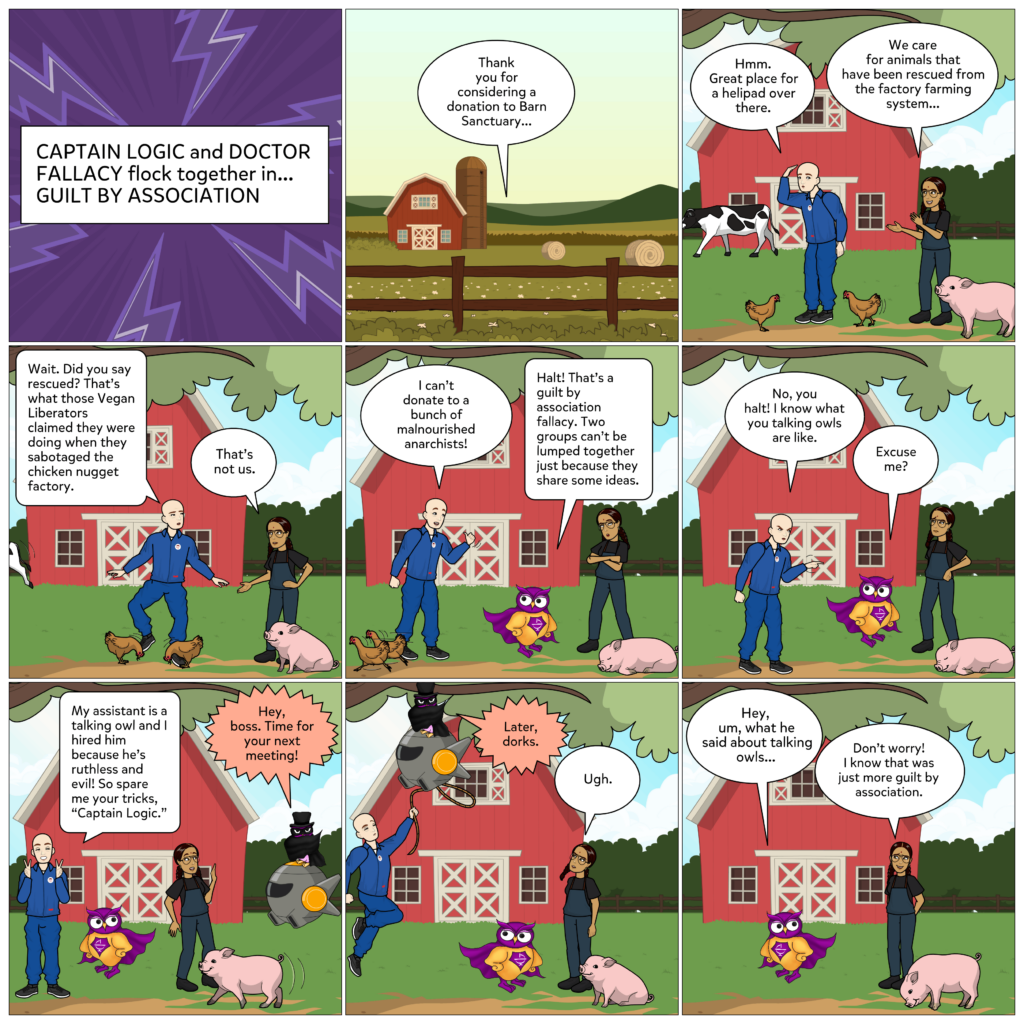A guilt by association fallacy occurs when someone connects an opponent to a demonized group of people or to a bad person in order to discredit his or her argument. The idea is that the person is “guilty” by simply being similar to or associated with this “bad” group and, therefore, their arguments should be disregarded.
Guilt by association fallacies can often work in concert with hasty generalization or ad hominem fallacies, especially when they’re used to attack a specific group of people.
While guilt by association fallacies often include unfair stereotypes, this is not always the case. Guilt by association can even be factually accurate. For example, imagine two politicians both support a bill for free school lunches. However, one of these politicians has a known history of corruption. Despite being based on fact, it would still be illogical to use the corrupt politician as a means to discredit the second politician and their ideas.
In our comic below, you’ll find two instances of the guilt by association fallacy.

For a screen reader compatible slideshow version of the comic, please click through the below images:
First, we see the animal sanctuary discredited because of its use of language that’s similar to a more aggressive animal rights organization. Then, we see Captain Logic’s arguments brushed aside because he’s a talking owl like the known troublemaker Doctor Fallacy. Both of these guilt by association fallacies fail to engage with the actual ideas being presented.
Guilt by association is a common trap to fall into and can be encountered in wide-ranging circumstances, from political campaigns to job interviews. Invoking a shady person or a demonized group can be a shortcut to persuading an audience, because doing so preys upon existing knowledge or fears. Often, this fallacy is deployed to distract an audience or muddy the waters. We should always try to focus on the actual issue being discussed, rather than falling for diversions like guilt by association.
